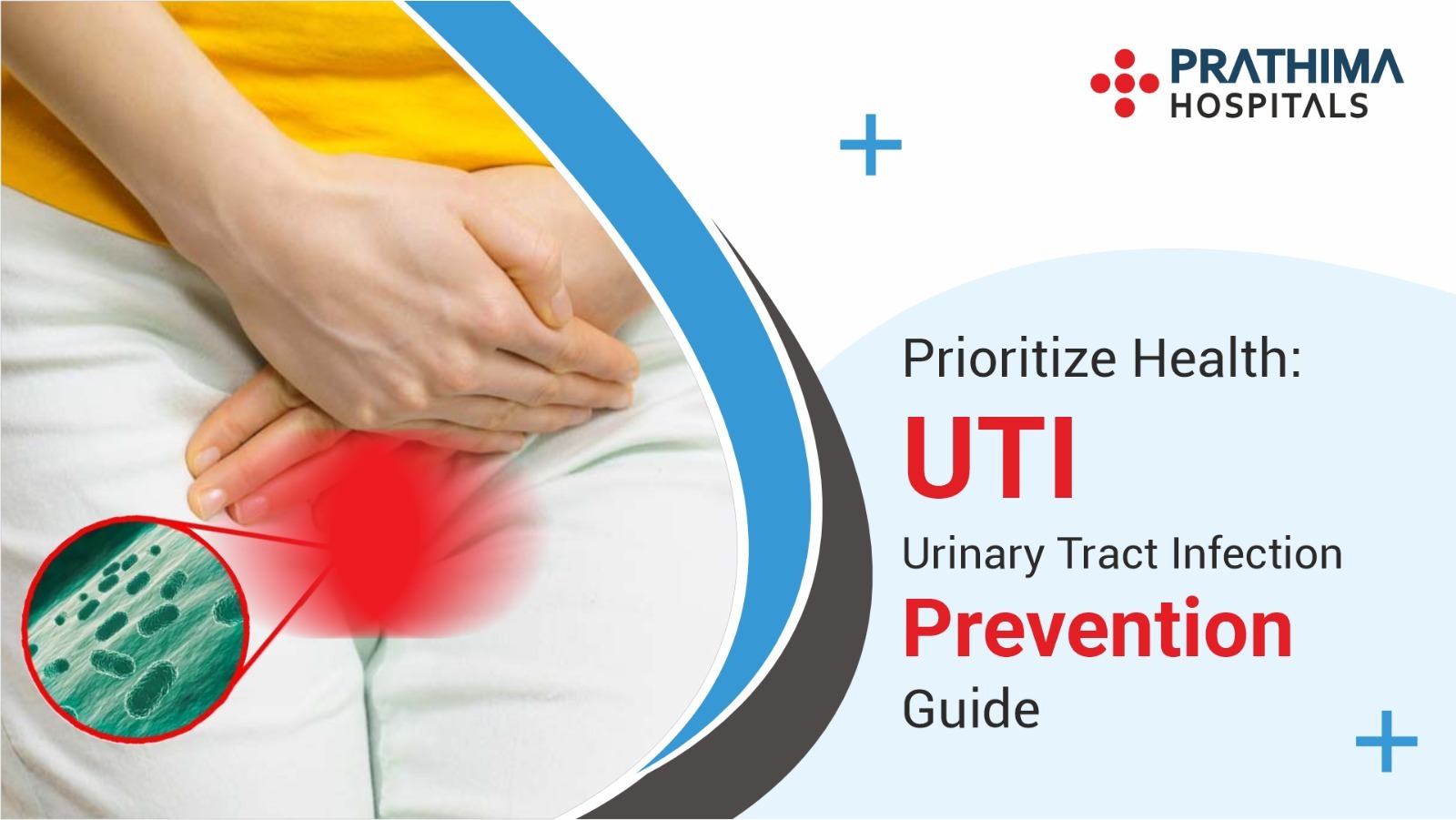The Sepsis Challenge: Recognizing the Signs of a Silent Threat!

Symptoms and Causes of Sepsis
Introduction:
Sepsis is a critical medical condition that often goes unnoticed until it’s too late. It poses a severe threat to anyone who contracts it, regardless of age or health as said by the Best General Physician in Hyderabad. On this World Sepsis Day, let’s explore the definition, causes, symptoms, diagnosis, treatment, and alarming statistics that make sepsis a global health concern. By the end, you’ll have a comprehensive understanding of what sepsis is and why it’s so dangerous.
1. Understanding Sepsis:
Sepsis, also known as “blood poisoning,” is a life-threatening condition that occurs when the body’s response to infection becomes chaotic. In simpler terms, it happens when the body’s immune system, designed to fight infections, starts attacking its tissues and organs. This uncontrolled immune response leads to inflammation throughout the body, causing a cascade of harmful effects.
To grasp sepsis better, let’s break down its key components:
- Infection: Sepsis begins with an infection, which can be caused by various pathogens such as bacteria, viruses, fungi, or parasites. Common sources of infection leading to sepsis include pneumonia, urinary tract infections, abdominal infections, and skin infections.
- Systemic Inflammatory Response Syndrome (SIRS): In response to the infection, the body initiates a systemic inflammatory response. Symptoms include fever, increased heart rate, rapid breathing, and elevated white blood cell count.
- Organ Dysfunction: As sepsis progresses, the inflammatory response becomes excessive, leading to organ dysfunction. Organs commonly affected include the heart, lungs, kidneys, liver, and brain.
- Septic Shock: The most severe stage of sepsis is septic shock. It is characterized by a profound drop in blood pressure, which can lead to organ failure, multiple system organ failure (MODS), and death if not treated promptly.
2. The Silent Danger:
Sepsis is often called “the silent killer” because it can develop insidiously with symptoms that mimic less severe illnesses. This delayed recognition and diagnosis contribute to its dangerous nature. Here’s why sepsis is a formidable adversary:
- Rapid Progression: Sepsis can escalate from a seemingly minor infection to a life-threatening condition within hours, requiring swift medical intervention.
- Misdiagnosis: Early sepsis symptoms, like fever and confusion, resemble those of other illnesses. Healthcare providers may initially misdiagnose sepsis as the flu or pneumonia, leading to delayed treatment.
- High Mortality Rate: Sepsis has a high mortality rate, especially in septic shock. Even with the best care, the death rate can exceed 30%.
- Global Prevalence: Sepsis is a global health concern, affecting millions yearly. It doesn’t discriminate by age, gender, or socioeconomic status, making it a threat to everyone.
3. Causes of Sepsis as per the Best General Physician in KPHB:
Sepsis can develop from various infections, with severity ranging from mild to severe. Understanding its causes helps recognize risk factors and prevent its onset:
- Bacterial Infections: Most sepsis cases are triggered by bacterial infections. Common culprits include Streptococcus, Staphylococcus, E. coli, and Klebsiella.
- Viral Infections: Though less common, viruses like the flu can lead to sepsis, especially in those with weakened immune systems.
- Fungal Infections: Fungal sepsis affects individuals with compromised immune systems, such as cancer patients or transplant recipients.
- Parasitic Infections: Rarely, parasites like malaria can cause sepsis.
- Skin and Soft Tissue Infections: Infections from wounds or surgical sites can progress to sepsis if untreated.
- Urinary Tract Infections (UTIs): Untreated UTIs, especially in the elderly or those with health issues, can lead to sepsis.
- Gastrointestinal Infections: Infections in the gastrointestinal tract, like diverticulitis, can result in sepsis if bacteria enter the bloodstream.
- Respiratory Infections: Bacterial pneumonia and bronchitis can lead to sepsis if left untreated.
4. Risk Factors for Sepsis:
Certain factors increase the risk of sepsis. Identifying these is essential for early detection and prevention. Common risk factors include:
- Age: Sepsis affects all ages but is riskier for the very young and old due to weaker immune systems.
- Weakened Immune System: Conditions like HIV/AIDS, cancer, diabetes, or autoimmune diseases weaken the immune system, increasing susceptibility to infections that can lead to sepsis.
- Chronic Illnesses: Heart, lung, and kidney diseases weaken the body’s infection-fighting abilities, raising sepsis risk.
- Surgical Procedures: Postoperative infections pose a sepsis risk, especially if surgical wounds get contaminated.
- Invasive Devices: Catheters and ventilators can introduce infection-causing bacteria, increasing sepsis risk.
- Recent Infections: Recent or ongoing infections heighten sepsis risk.
- Substance Abuse: Alcohol or drug abuse makes individuals more infection-prone, raising sepsis risk.
- Lack of Vaccination: Not getting recommended vaccines leaves individuals vulnerable to infections leading to sepsis.
5. Symptoms of Sepsis:
According to the Best General Physician in Kukatpally, identifying sepsis signs is crucial for early intervention & improved outcomes. There can be a combination of signs, including:
- Fever or Hypothermia: Sepsis can cause high fever or abnormally low body temperature.
- Rapid Heart Rate: Elevated heart rate is common as the body pumps more blood to fight infection.
- Rapid Breathing: Increased respiratory rate signals the body’s response to infection.
- Confusion or Altered Mental State: Sepsis can affect cognition, causing confusion or disorientation.
- Hypotension: Low blood pressure is a septic shock hallmark, indicating a severe drop in blood flow to organs.
- Reduced Urine Output: Kidney dysfunction leads to decreased urine production.
- Shortness of Breath: Difficulty breathing, even without lung issues, can occur in sepsis.
- Skin Changes: Skin may appear mottled, pale, or discoloured, with rashes or petechiae (small reddish-purple spots).
- Abdominal Pain: Abdominal infections can cause pain and tenderness.
- Nausea and Vomiting: There is a chance of gastrointestinal signs, such as nausea & vomiting.
6. Diagnosing Sepsis:
Early diagnosis is vital for sepsis outcomes. Healthcare providers use clinical assessment, lab tests, and imaging to diagnose sepsis:
- Clinical Assessment: Medical history, vital signs, and physical exams identify infection signs and organ dysfunction.
- Lab Tests: Blood tests like CBC, blood cultures, CRP, and procalcitonin help diagnose sepsis. Elevated white blood cell counts and abnormal results indicate sepsis.
- Imaging: X-rays, CT scans, or ultrasounds can identify infection sources and assess organ function.
- Lactate Levels: Elevated lactate indicates tissue oxygen shortage, critical for diagnosing sepsis and septic shock.
- Biomarkers: Biomarkers like the “sepsis score” assess sepsis likelihood using clinical and lab data.
- Severity Assessment: Scoring systems like SOFA and qSOFA determine sepsis severity, and guiding treatment.
7. Treating Sepsis:
Sepsis demands immediate intervention. Treatment targets the infection, manages inflammation, and supports organ function:
- Antibiotics: Swift, broad-spectrum antibiotics treat the infection. When the pathogen is identified, tailored antibiotics are used.
- IV Fluids: Fluid resuscitation maintains blood pressure and organ perfusion. Careful fluid balance prevents complications.
- Vasopressors: In septic shock, vasopressors constrict blood vessels, increasing blood pressure.
- Source Control: Surgery removes localized infection sources.
- Mechanical Ventilation: Severe respiratory distress may require mechanical ventilation.
- Supportive Care: Pain management, nutrition, and complication prevention are crucial.
- Immunomodulatory Therapy: Corticosteroids or immunoglobulins modulate the immune response.
- Targeted Therapy: Emerging treatments like monoclonal antibodies target sepsis components.
8. Sepsis Complications:
According to the Best General Physician in Kachiguda, Sepsis survivors can face long-term complications affecting their quality of life:
- Post-Sepsis Syndrome: Weakness, fatigue, memory issues, and anxiety can persist for months or years.
- Organ Dysfunction: Sepsis can damage the heart, lungs, kidneys, and liver.
- Amputations: Severe sepsis can cause tissue necrosis, leading to limb amputations.
- Secondary Infections: Weakened immunity raises the risk of further infections.
- Psychological Impact: Surviving sepsis can cause PTSD and psychological issues.
- Chronic Pain: Persistent discomfort is possible post-sepsis.
9. Global Impact of Sepsis:
Sepsis is a worldwide health crisis:
- Prevalence: Approximately over 50 million get sepsis yearly, particularly in low- and middle-income countries.
- Mortality: Sepsis causes about 20% of global deaths.
- Economic Burden: Treating sepsis and post-sepsis care costs billions yearly.
- Hospitalizations: Sepsis often leads to intensive care unit stays.
- Healthcare Workers: Those managing infectious diseases are at risk.
- Antimicrobial Resistance: Misusing antibiotics contributes to antimicrobial resistance.
10. Prevention and Awareness:
Preventing sepsis is vital:
- Vaccination: Recommended vaccines prevent many infections leading to sepsis.
- Infection Control: Hand hygiene, healthcare infection control, and prudent antibiotic use stop infections.
- Early Recognition: Public and healthcare provider awareness is key.
- Sepsis Protocols: Hospitals need sepsis protocols.
- Research: Ongoing research improves sepsis understanding.
- Public Education: Awareness campaigns educate on sepsis risks and the importance of prompt treatment.
Conclusion:
Sepsis is a formidable, often silent threat. Early recognition, appropriate treatment, and ongoing research are essential. Public awareness and prevention efforts can help mitigate its devastating impact. While sepsis may be a silent danger, knowledge and vigilance can make its deadly consequences a thing of the past.
.
.
.
.
.
For More Details:
📞:: 733 733 6600 | 040 4345 4345
🌐:: https://prathimahospitals.com/book-appointment/



